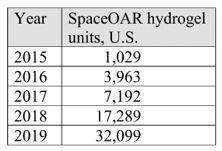Nothing for Free: Federal Circuit Clarifies Commercial Success is All About Sales
In affirming final written decisions of the Patent Trial and Appeal Board (PTAB) in two inter partes reviews (IPRs), the Court of Appeals for the Federal Circuit (CAFC) ruled that only actual product sales count toward a showing of commercial success. Incept LLC v. Palette Life Sciences, Inc., 21-2063 (Fed. Cir. Aug. 16, 2023). Other distributions of products, such as replacements and free samples, the CAFC held, are not considered sales for purposes of establishing commercial success. Moreover, providing accounting information that does not clearly delineate between sales and other non-sales distributions is likely to be insufficient to establish commercial success. This holding is an important reminder for patent owners to properly present accounting information in support of commercial success arguments and underscores the value for petitioners in probing witnesses on the details of accounting information.
The CAFC held that shipment data must clearly be attributable to sales, not free samples or replacements.
The patent owner (Incept) argued during the IPR that the year-on-year shipments of its SpaceOAR hydrogel units doubling through 2019 was sufficient to establish commercial success. The SpaceOAR product pertained to the treatment of prostate cancer, as did the corresponding patents in question. The patent owner produced a table of “annual unit shipments” of its SpaceOAR hydrogel product to customers from 2015-2019. However, the table included not only shipments for sales, but also aggregated shipments for replacements and free samples.

While the patent owner’s declarant provided a breakdown of shipments for sales, free samples, and replacements for 2015-2017, the declarant did not provide a breakdown for 2018 or 2019. Moreover, the patent owner’s declarant was only able to say that the number of shipments attributable to free samples and replacements in 2018 or 2019 was “small.” The PTAB and CAFC faulted the patent owner for the misalignment between its Patent Owner Response argument that sales doubled through 2019 and the shipment data produced, which lacked sales data for 2018 and 2019. Specifically, the CAFC echoed the PTAB’s holding that such a “record does not demonstrate whether the year-over-year increase in units shipped is attributable to increased sales as opposed to an increase in samples and replacements that were shipped.”
Declarants in PTAB proceedings must explain the relevance of sales increases to commercial success in the context of the market as a whole.
The PTAB and CAFC also faulted the patent owner for failing to argue in its Patent Owner Response or Sur-Reply that the unit shipments for 2015-2017 demonstrated commercial success. Specifically, the patent owner’s declarants failed to explain how the sales increases it did demonstrate were sufficient to constitute commercial success in the context of the market as a whole. The court stated that neither declarant had demonstrated “how those sales exhibit a commercial success in the context of the market as a whole” and “[a]ccordingly, we do not find that the evidence of product shipment submitted demonstrates commercial success of claim 1 so as to support a finding of nonobviousness.” The PTAB and CAFC may have been satisfied if the patent owner or its declarants had provided a clear explanation of how the alleged doubling in sales indicates commercial success in the context of the relevant market.
This holding by the CAFC is a pointed reminder of some of the tripwires that patent owners must carefully avoid. In many ways, this decision expands the PTAB’s historic reluctance to fill in the gaps in a party’s arguments to the context of establishing commercial success. For example, the CAFC held earlier this year that evidence of nonobviousness associated with establishing commercial success must relate to more than a feature that was known in the art, even if that feature is not well known in the art. Yita LLC v. MacNeil IP LLC, 22-1373 (Fed. Cir. June. 6, 2023). Parties on both sides of the aisle would be wise to thoroughly vet commercial success arguments to ensure they withstand this increased scrutiny.

